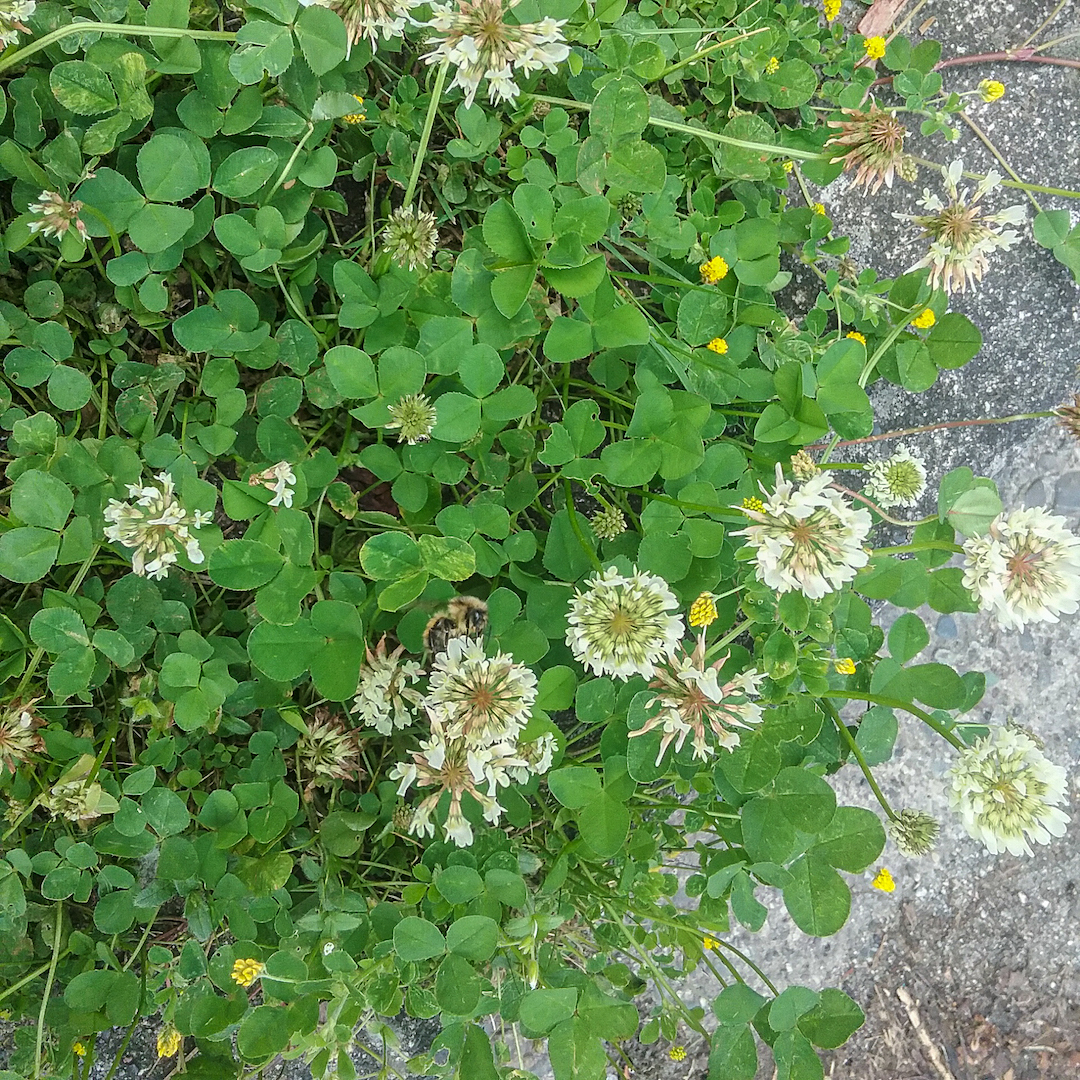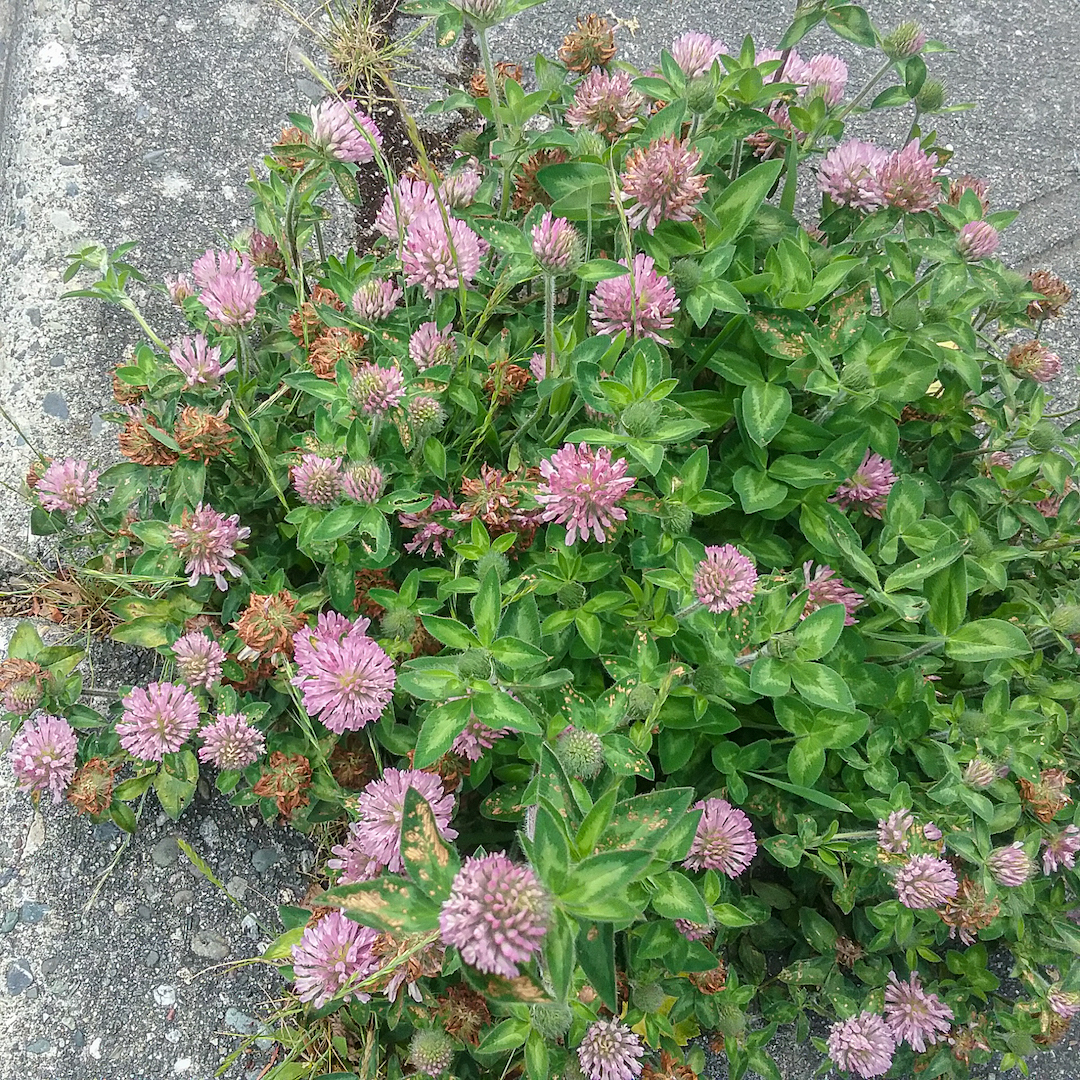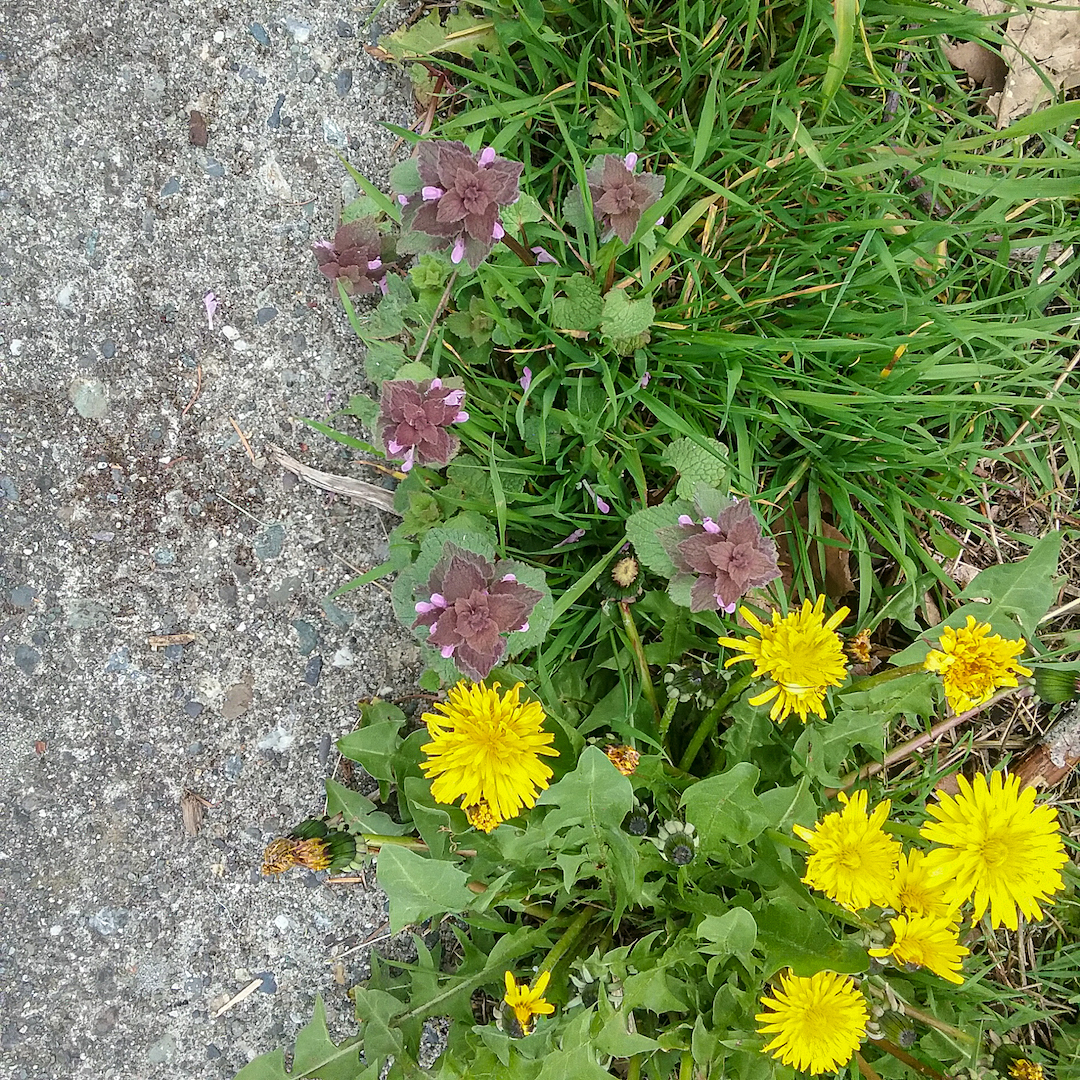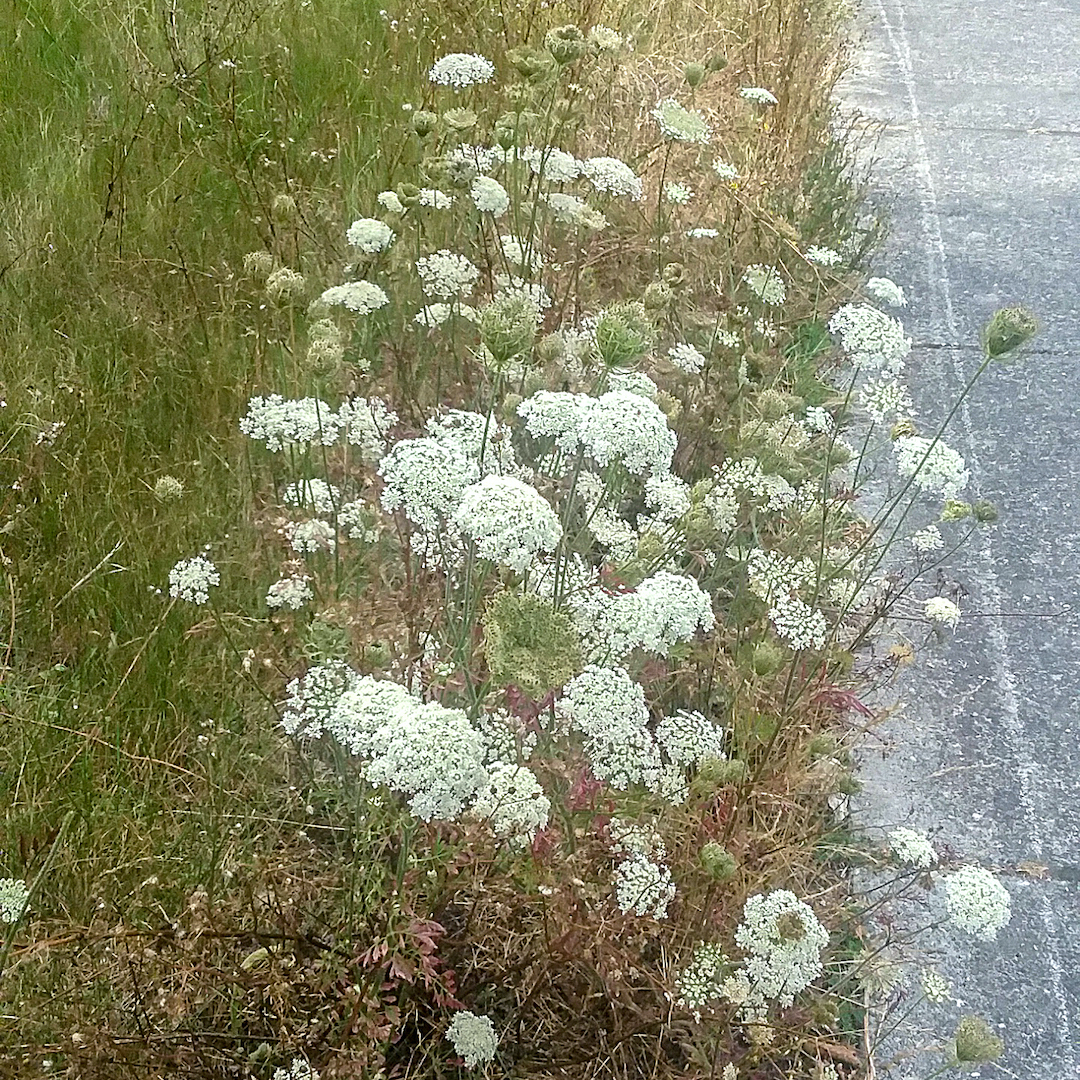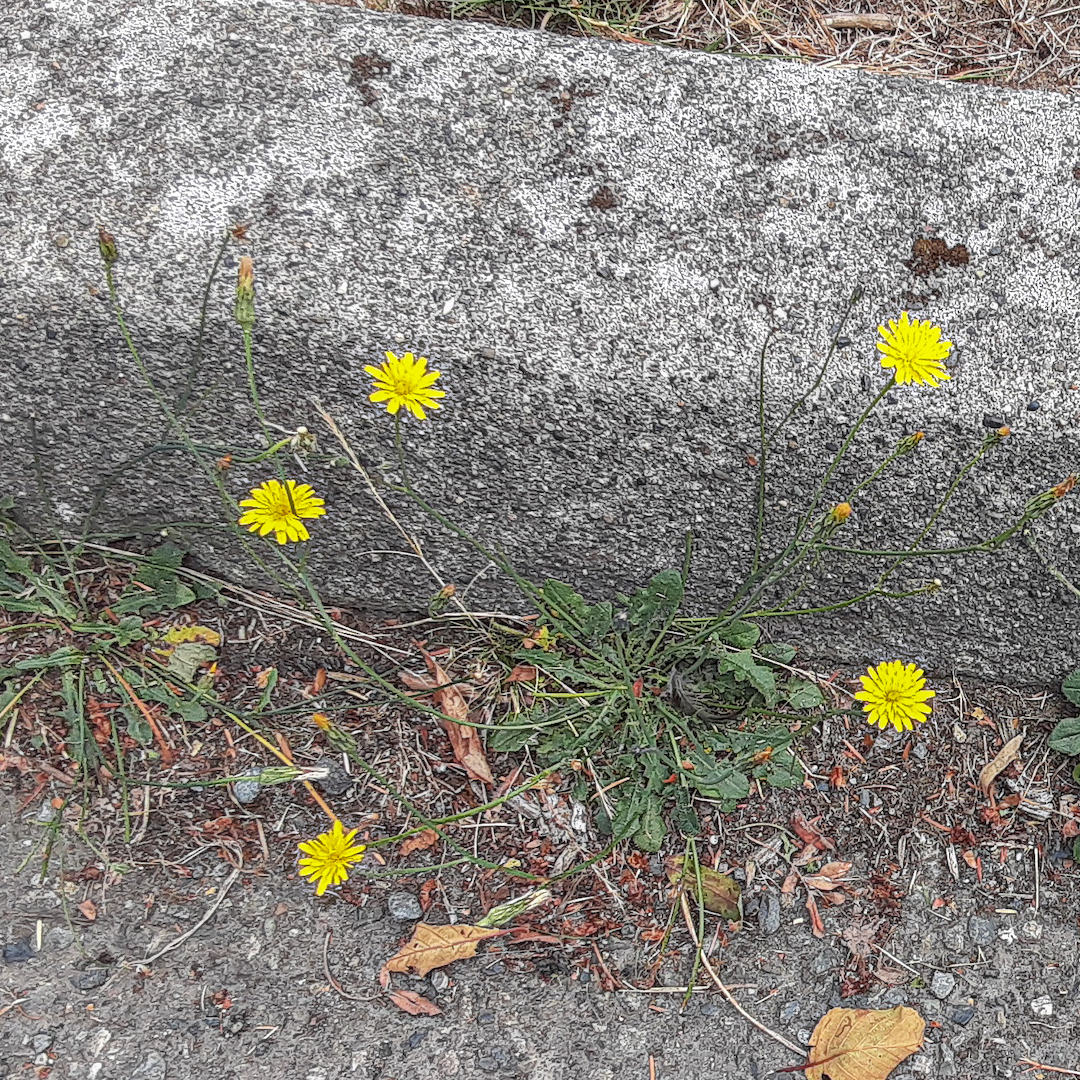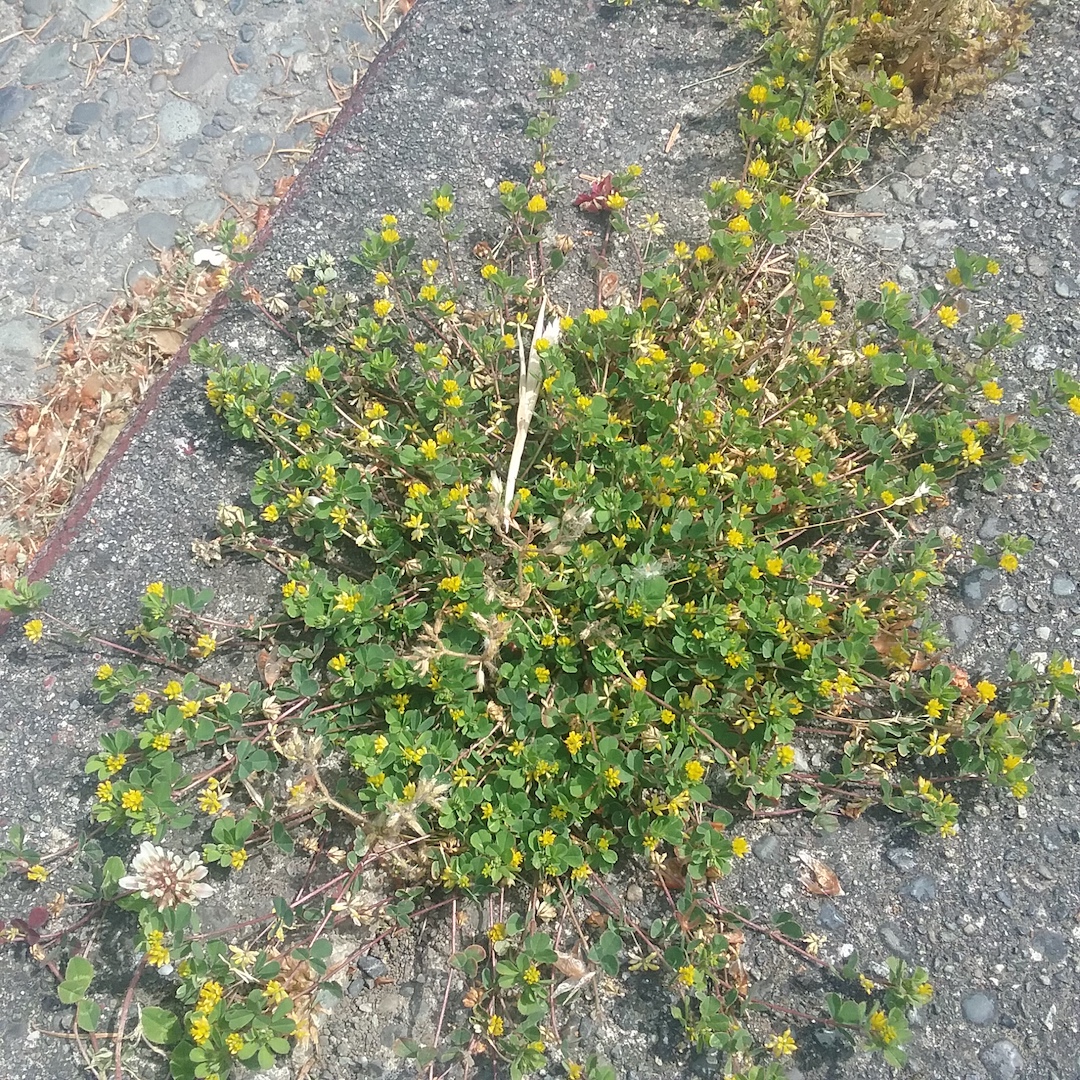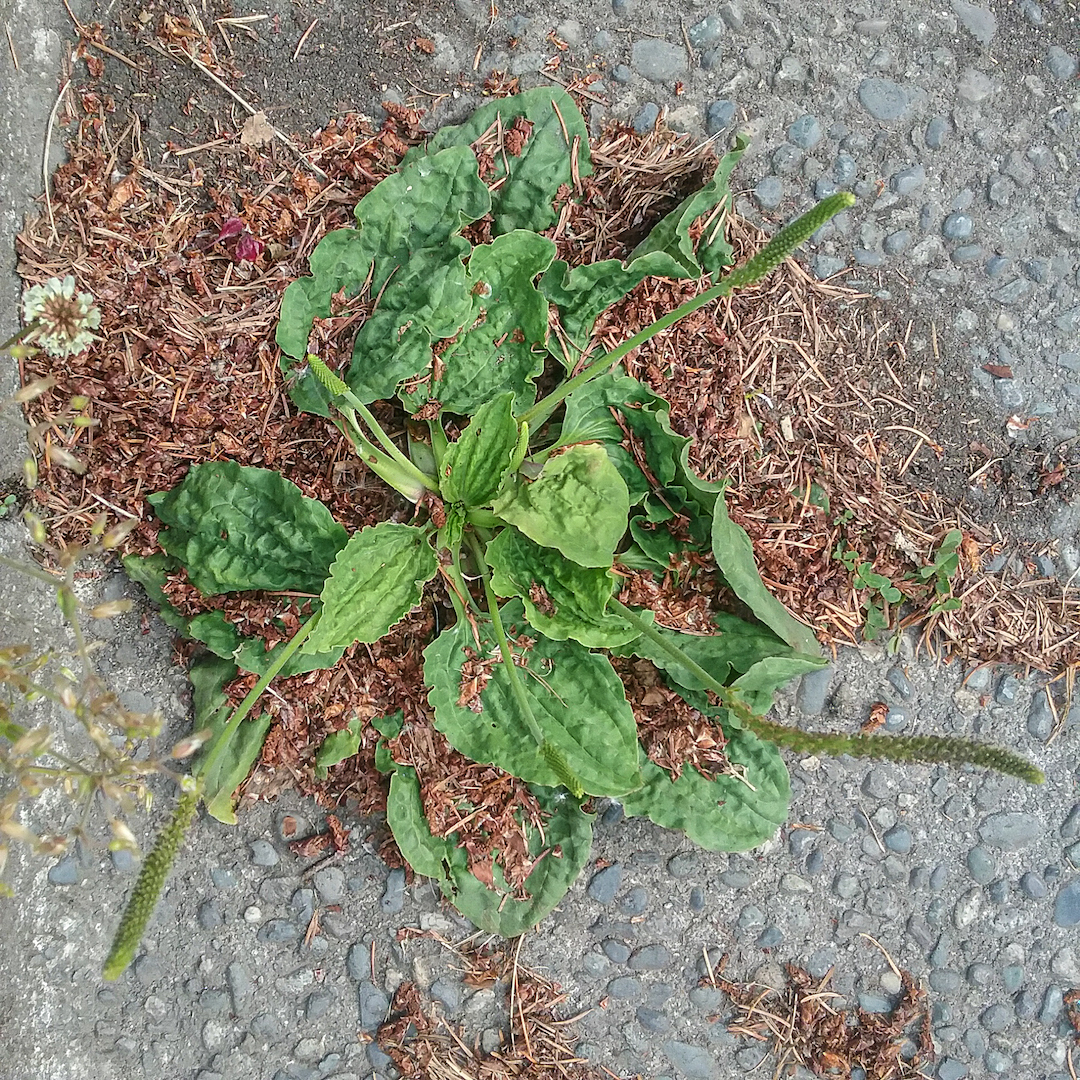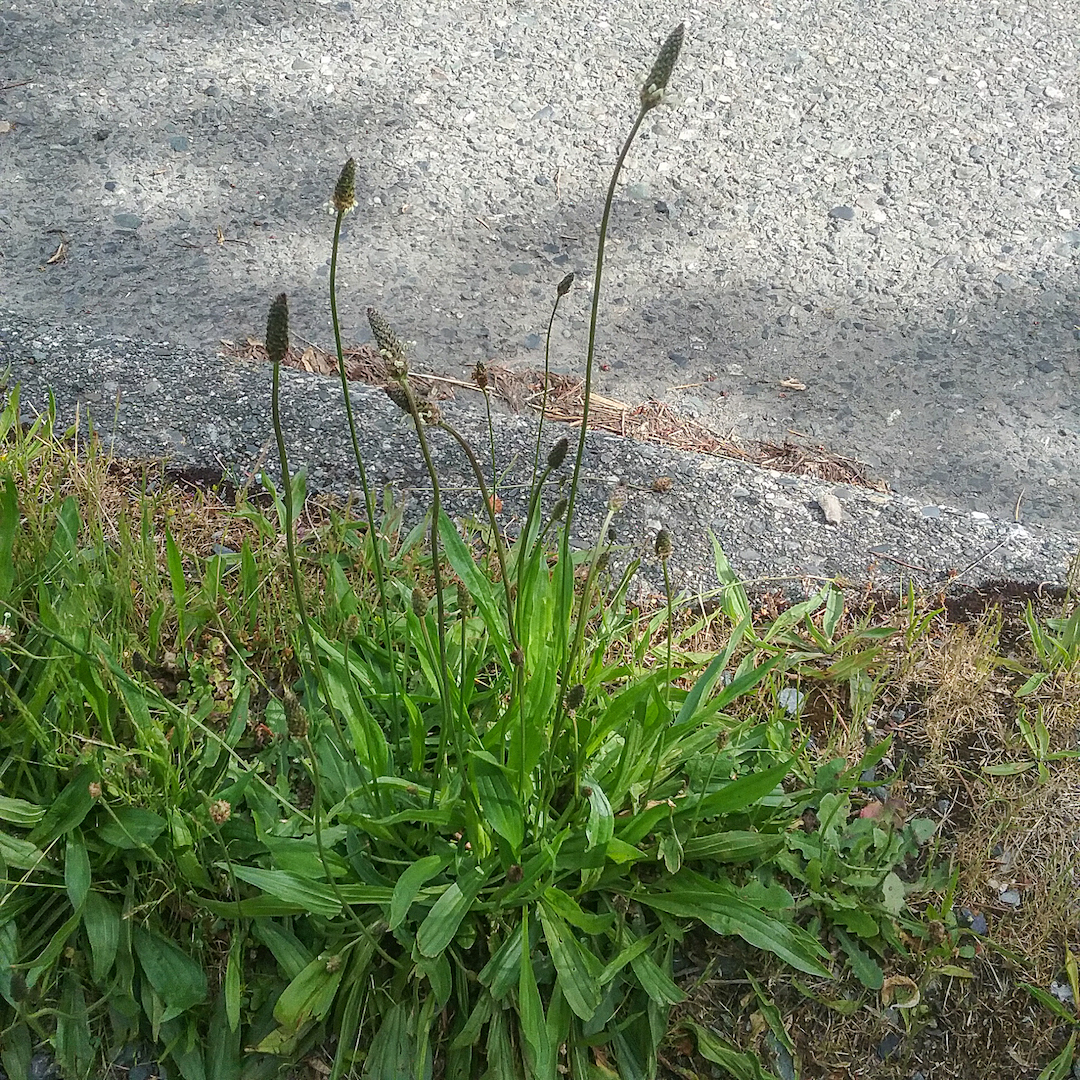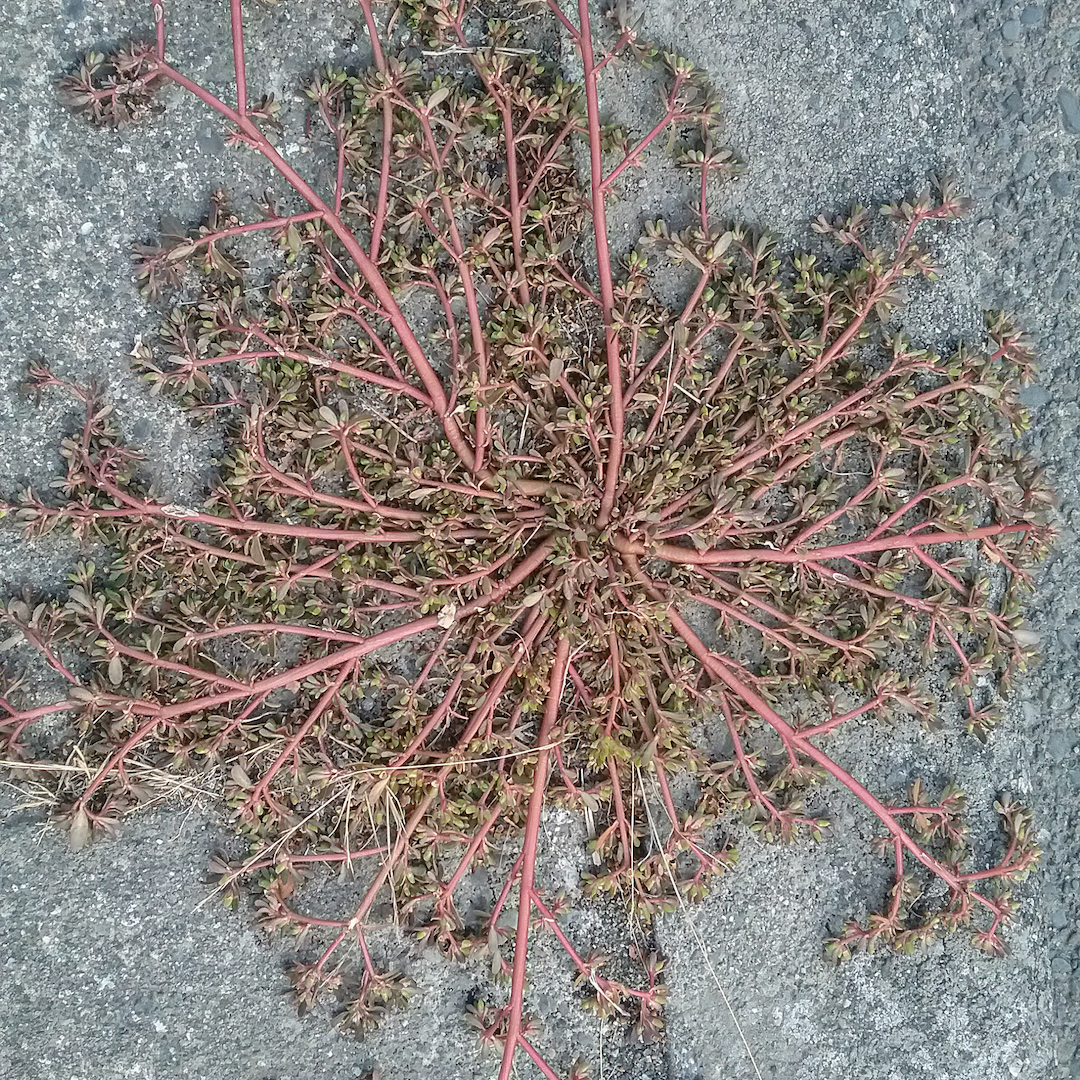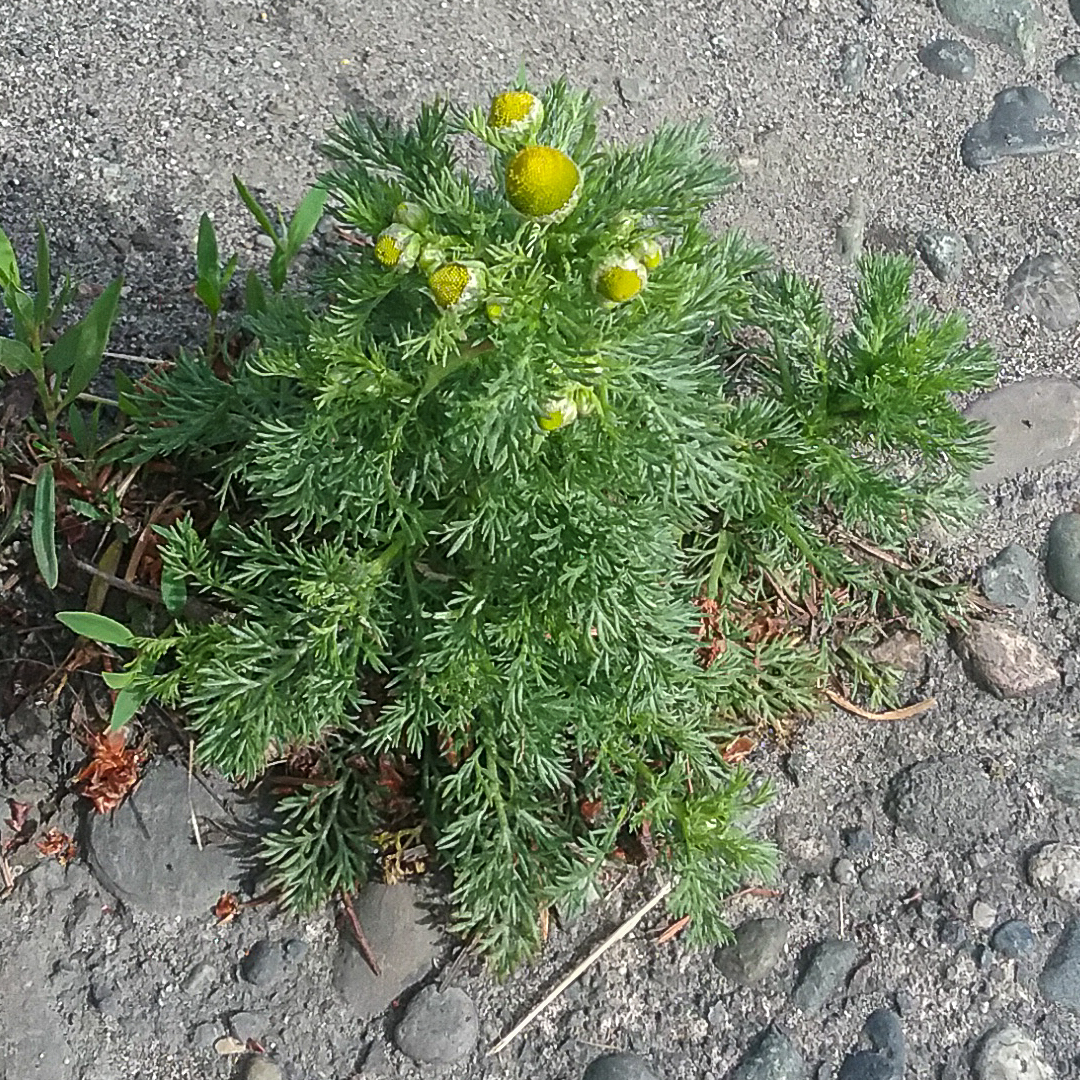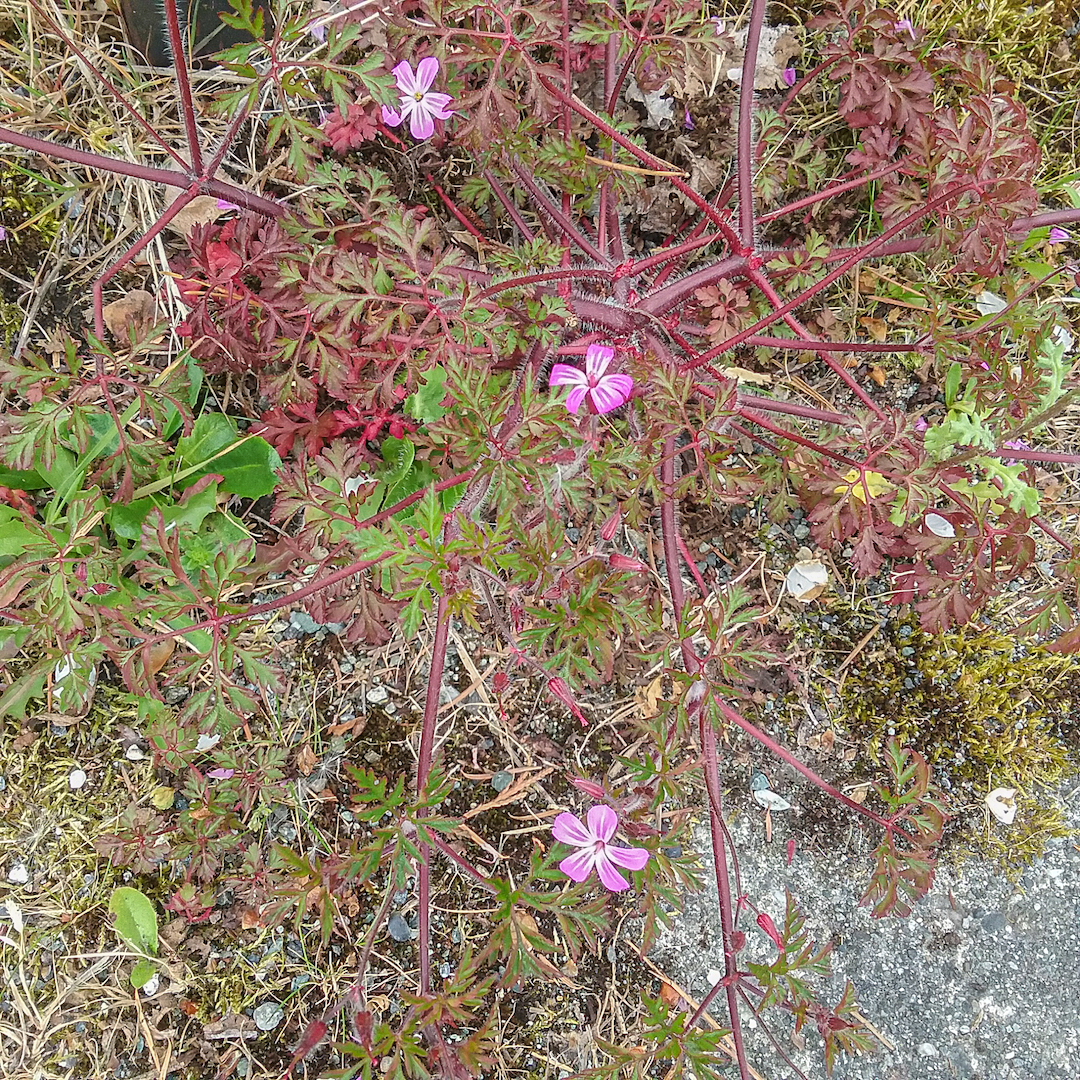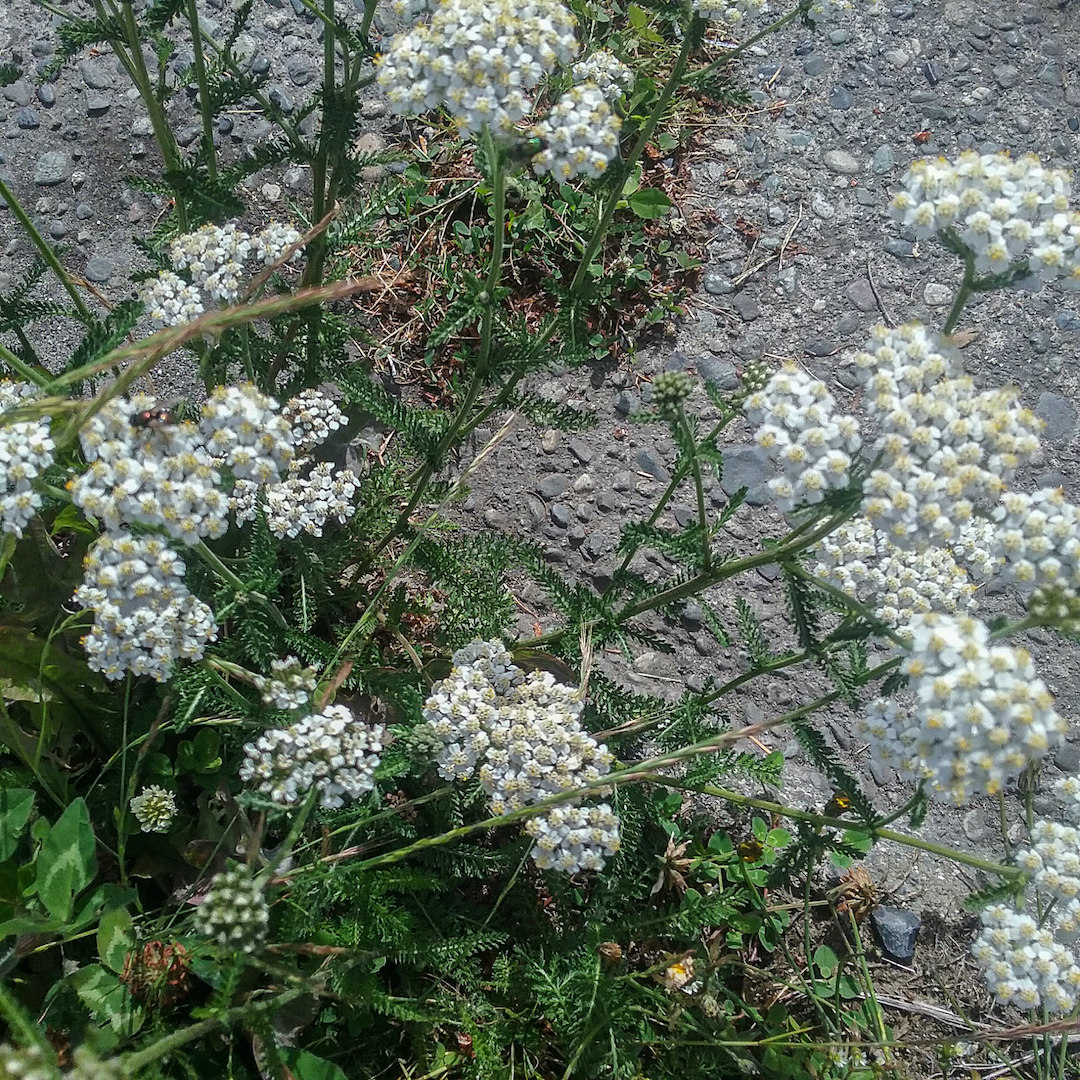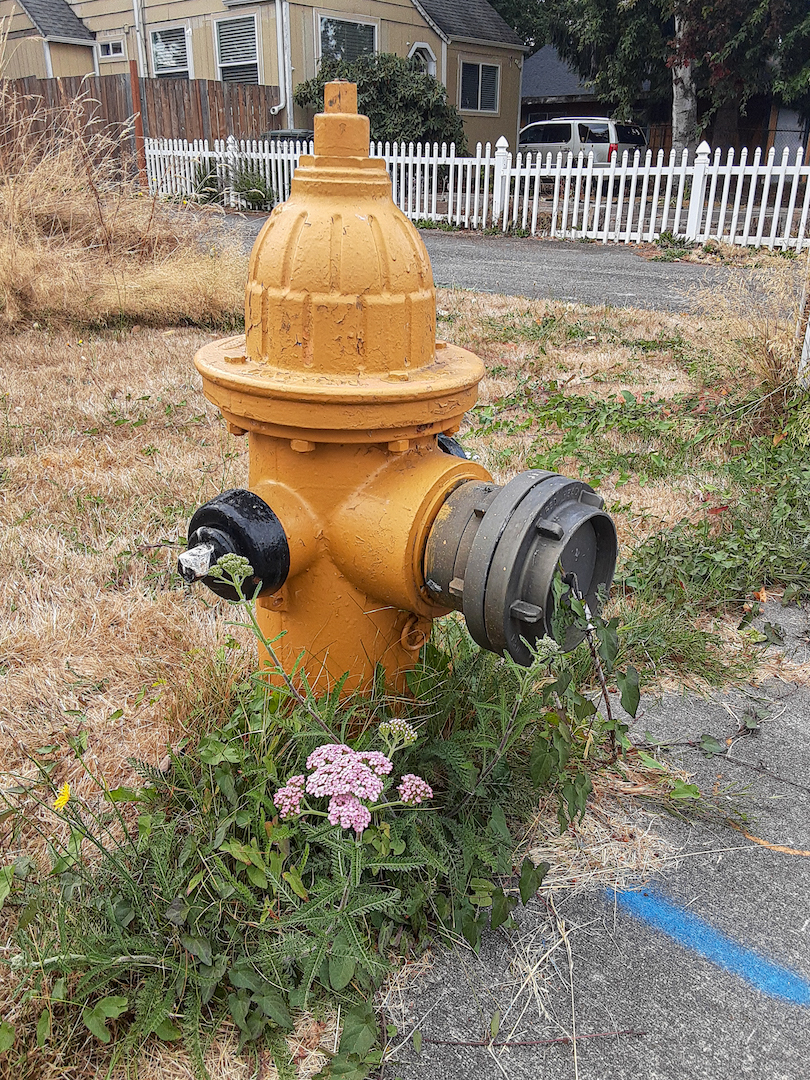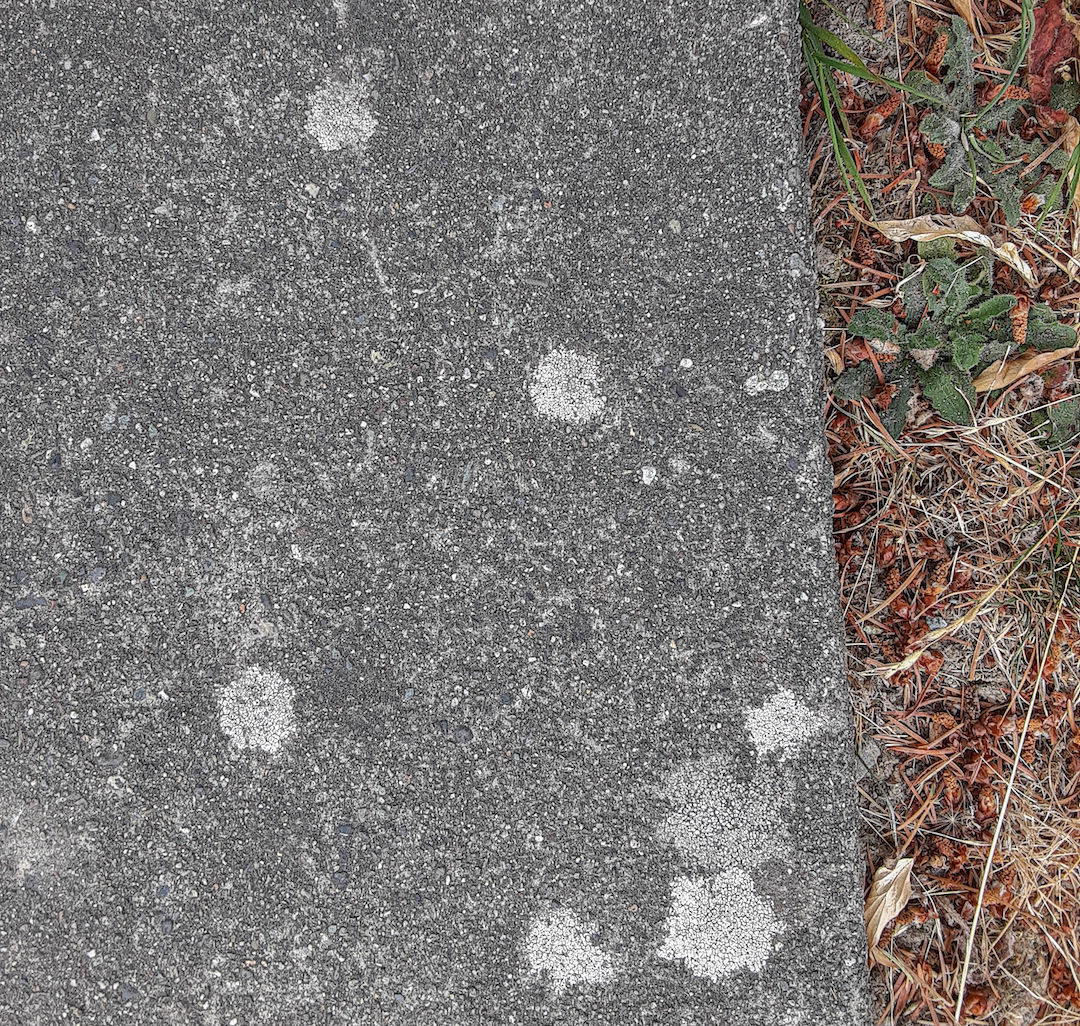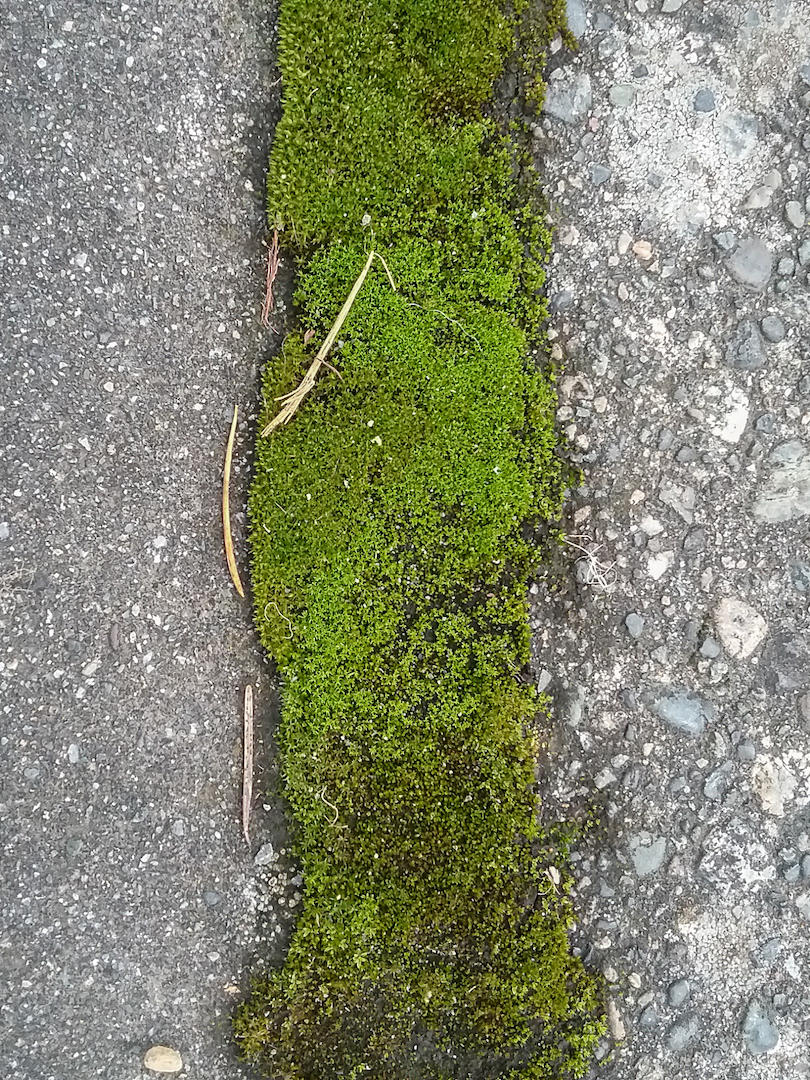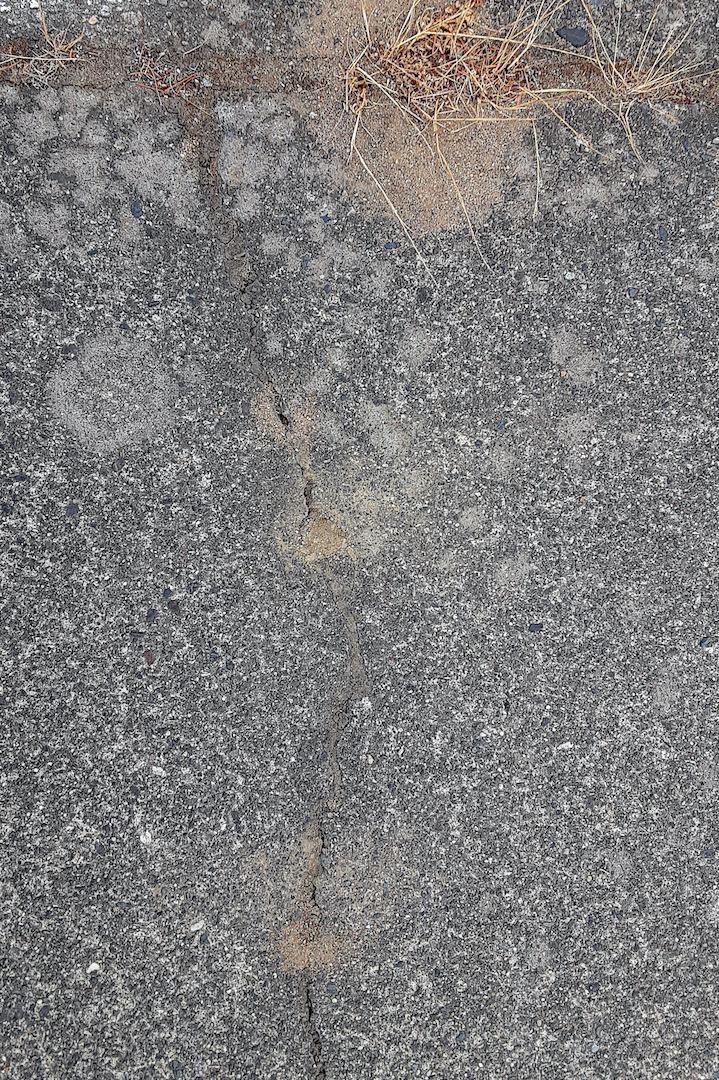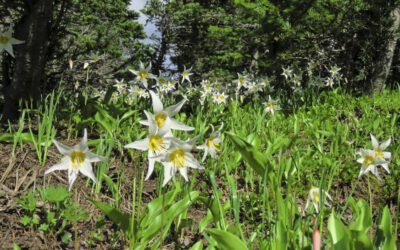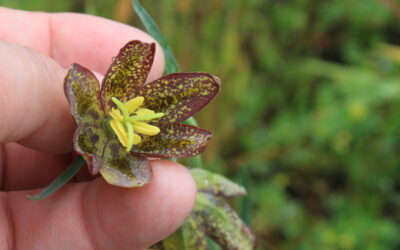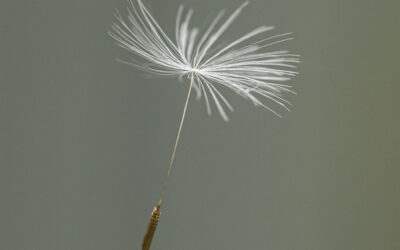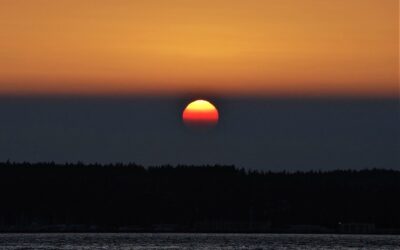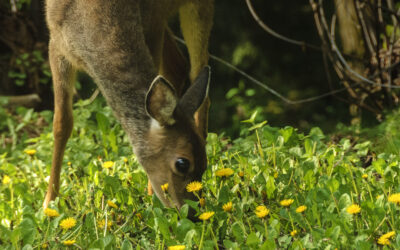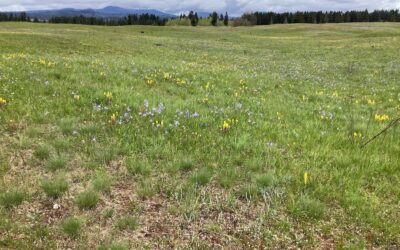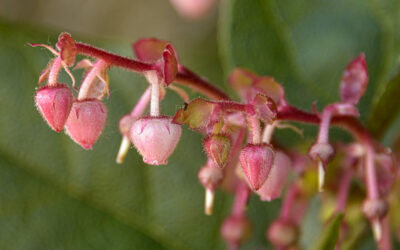SIDEWALK WILDERNESS
Text & photos by Sara and Thomas Noland, Autumn 2022
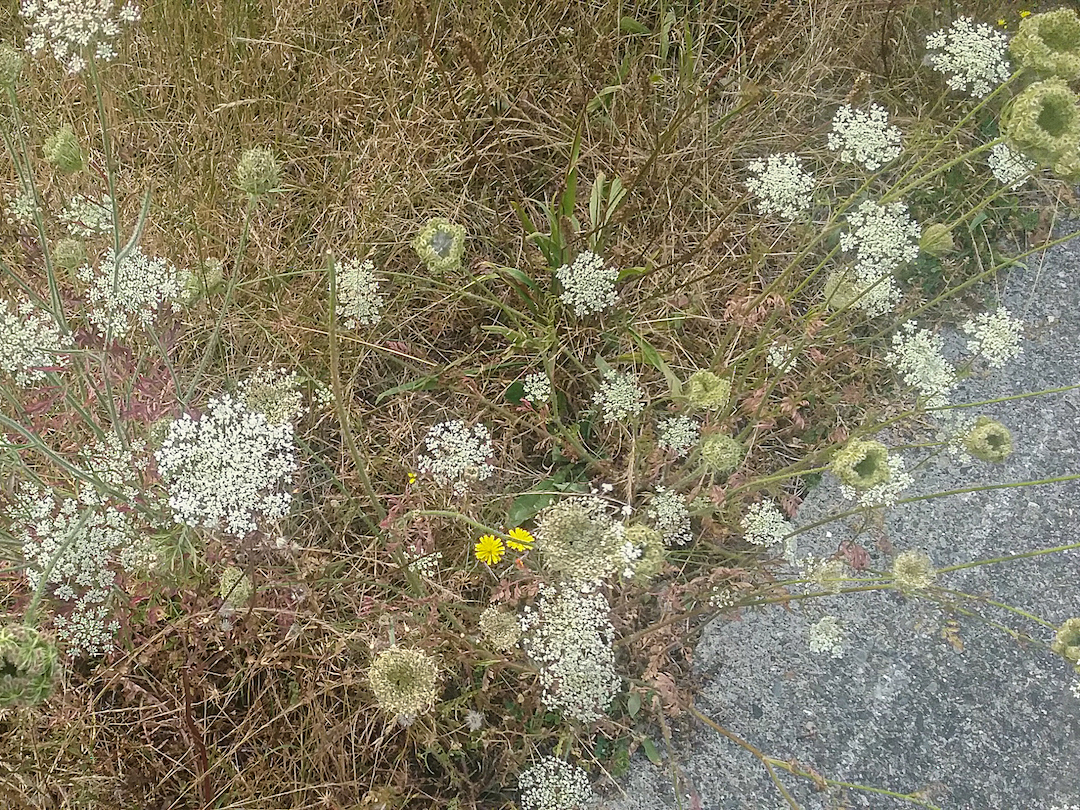
Queen Anne’s lace.
SIDEWALK WILDERNESS
Text & photos by Sara and Thomas Noland, Autumn 2022
The sidewalk is not the first place that comes to mind when thinking about habitat for plants and animals. Even discussions of “urban ecology” typically focus on parks, yards, and gardens — not the hard surface of a sidewalk, where anything that dares try to make a living is surely battered by passing feet, stroller wheels, hot sun, rainstorms, and exhaust from cars in the nearby street.
But next time you walk along a sidewalk, slow down a bit and take a closer look. Chances are you’ll find plants as well as lichens, moss, and even insects living in the sidewalk’s nooks and crannies. Exactly what you find will depend on things like the age of the sidewalk (older ones have had more time to be colonized by living creatures), amount of sun or shade, determination of neighbors to “keep the sidewalk clean” by scraping, power washing, or spraying herbicides, and other factors specific to your walking route.
Our neighborhood is an older one, with houses like ours built in the 1950s and most development in the area probably completed by the 1980s. So our sidewalks are settled and well aged. A few scattered homeowners feel the need to scrape and spray the sidewalks in front of their houses, but for the most part the sidewalks are left to grow what plants and other creatures they will. Below are just a few of the sidewalk-inhabiting creatures we’ve found during walks around our suburban neighborhood.
flowering plants
During spring and summer we can often count a dozen different flowering plant species growing in sidewalk cracks around our neighborhood. Some have colorful flowers you can’t miss even on a fast walk. As you’d expect, most of these plants are non-native, introduced species — the super hardy, drought-tolerant, pioneering plants that favor places where the soil is poor and sunshine bakes the pavement.
White and purple clover are abundant, and it’s a treat to find a trace of their sweetness on a summer breeze. Along one particular block, a pretty blend of yellow dandelion and purple self-heal flowers appears in late spring. A dandelion-like plant that flowers in late summer and fall is hairy cat’s-ear, with very fuzzy leaves and smaller yellow flowers atop tall stems. And Queen Anne’s lace graces the sidewalk strip with umbrellas of delicate white flowers; look closely and you’ll find a single dark purple flower in the center of each umbrella.
 The Dandy Dandelion also in this issue of Salish Magazine.
The Dandy Dandelion also in this issue of Salish Magazine.
There are other flowering plants that require a closer look to appreciate (and even see) their blooms. Common and lance-leaf plantain have spikes of small white flowers that quickly go to seed. Black medic is a spreading plant that forms flat green mats with small yellow flowers. Another mat-forming plant is prostrate spurge; you’ll need a magnifying glass to find the tiny white flowers along its stems.
Two common weedy sidewalk species are best known for their smell. A favorite from childhood is pineapple weed; some people think the fleshy cone of yellow flowers at the top has a pineapple fragrance when crushed. A less favorite species is herb Robert, also known as stinky Bob, which to many people has a pungent nasty odor, ranging from old gym socks to tar depending on who you ask. Unlike pineapple weed, which sticks to heavily disturbed areas, herb Robert also invades forests and outcompetes native species, making it a target for removal by forest restoration folks.
One surprise for us has been finding yarrow, a native species, flowering on several street corners in summertime. Both the native white form and a pink-flowering hybrid seem to do just fine in certain spots along the sidewalks.
Regardless of the original pedigree of these plants, they’re part of the neighborhood ecosystem. We’ve often observed sidewalk flowers being visited by bumblebees and other insects, particularly on clover, yarrow, and dandelion. It’s not hard to imagine spiders and crawling insects finding refuge in the leaves and stems. These plants trap sediment in sidewalk cracks, providing habitat for worms and other invertebrates and absorbing at least a bit of stormwater pollution. Sidewalks aren’t bird habitat, we’ll concede, but the insects and seeds harbored in a sidewalk bouquet are there for the taking by birds that can use them.
 Plants & Cities, a podcast of In Defense of Plants
Plants & Cities, a podcast of In Defense of Plants
 Introducing ‘Sidewalk Botany’ with the A.W.E. Society, from Plant Detroit.
Introducing ‘Sidewalk Botany’ with the A.W.E. Society, from Plant Detroit.
Once I stopped immediately judging plants as weeds, the landscape became alive with stories.
lichens
Lichens have an amazing capacity to grow in inhospitable places including sidewalks. One common lichen species is actually known as “sidewalk lichen” among other names. Its scientific name is Circinaria (Aspicilia) contorta. It grows in flat, grayish, irregular shapes. You may also find a yellowish lichen species on some sidewalks, depending on the local conditions. Lichens do not have roots and do not damage the sidewalk.
 Photos of Aspicilia and other lichens on Flickr
Photos of Aspicilia and other lichens on Flickr
 Lichens, a previous article in Salish Magazine
Lichens, a previous article in Salish Magazine
 In the Company of Alders, another discussion of lichens in Salish Magazine
In the Company of Alders, another discussion of lichens in Salish Magazine
mosses
Mosses are well adapted to colonizing bare areas, from tree bark to roof shingles to sidewalk cracks. Most moss species get the water and nutrients they need from dust and rainwater; they have shallow rhizomes instead of roots and don’t need soils to get established. Those moss rhizomes don’t damage the sidewalk. In addition, many mosses can dry out and then rehydrate, meaning they can survive through the summer and start growing again when the rain resumes. Mosses disperse by windblown spores and can reproduce by fragmentation. As with the lichens, mosses are indicators of air quality; some species don’t do well in polluted areas while others can survive. Those green strips of moss in the sidewalk cracks provide a whole world of habitat for small creatures such as tardigrades (aka moss piglets or water bears), diatoms, springtails, and mites.
 Living in the Land of Mosses in Pacific Northwest Pest Management Handbooks
Living in the Land of Mosses in Pacific Northwest Pest Management Handbooks
 Moss Under Microscope: Tardigrades and Other Microorganisms Live in Cracks of Sidewalks (excellent video of microscopic moss-dwelling creatures)
Moss Under Microscope: Tardigrades and Other Microorganisms Live in Cracks of Sidewalks (excellent video of microscopic moss-dwelling creatures)
 Of Moss and Microarthropods in Accumulating Glitches
Of Moss and Microarthropods in Accumulating Glitches
insects
A common sidewalk insect is the pavement ant (Tetramorium species), which was introduced from Europe during the 1800s and is now widespread in urban areas of North America and Canada. They thrive in places modified by humans and having little vegetation. There are more than 520 species of pavement ants. These small, reddish brown to black ants (up to 3 mm long) form colonies that nest in bare soil, rotting wood, and sidewalk cracks.
Ants have complex social systems containing castes (such as queens and workers) that live and function together as a colony. While a colony is growing and establishing its territory, it may fight vigorously with neighboring colonies. Pavement ants consume seeds, pollen, honeydew, sap, and other insects. Their burrows may be up to a meter deep. Unless you spot the ants themselves, the only evidence of a colony visible on the surface is small holes within the sidewalk cracks (entry portals to the burrow below) and small piles of soil around these entrances, which will be washed away during the next rain. During the summer, winged reproductive males and females mate in swarms.
Pavement ants are considered by some to be a nuisance; they can sting and cause skin reactions if they get trapped in clothing, and some species damage garden plants. On the positive side ecologically speaking, these ants provide food for birds such as the northern flicker (see the video link below).
the bigger picture
A sidewalk is just one of many structures that humans build and the natural world seeks to colonize. We have choices about how to view the creatures that find a place where we didn’t intend them to be. One of those choices is whether to seek a “clean” and manicured world, or to accept some rough edges, some places where we let the natural world do what it will, as part of our living spaces. A walk along a sidewalk is a good time to observe and learn about the rough and ready creatures that live so near to us, managing to survive and even flourish just next door.
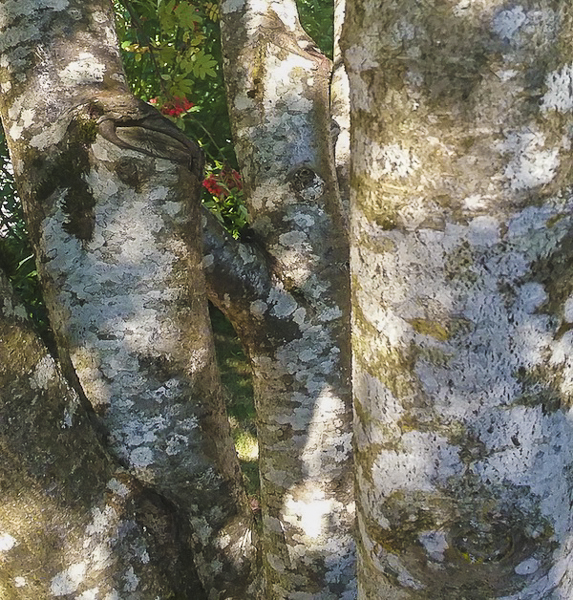
Sara and Thomas Noland are naturalists who live in Everett, Washington. They live in a tiny house with many cats but are fortunate to have a big yard with lots of trees, birds, and lichens. They frequently take field trips to enjoy and photograph mountains, beaches, and deserts, as well as enjoying the creatures in their own neighborhood.
Table of Contents, Issue #17, Autumn 2022
Mountain Lilies
By Laura Mariko Marx, Autumn 2022The white avalanche lily (Erythronium montanum) and the yellow glacier lily (Erythronium grandiflorum) are native Pacific Northwest flowers that are related, but are usually found at slightly different altitudes. The best time to see...
All Kinds of Flowers!
By Fayla Schwartz, Autumn 2022 photos by Fayla Schwartz except as notedphoto by Thomas NolandBy Fayla Schwartz, Autumn 2022 photos by Fayla Schwartz except as notedThe Salish Sea region is home to a wide variety of flowering plants. This article provides a short...
Dandelion Transformation
by John F. Williams, Autumn 2022 by John F. Williams, Autumn 2022A rugged-looking brown seed attached to a parachute glides through the air. How did that dandelion flower create dozens and dozens of these seeds? This six minute video takes a look at that...
Poetry-17
Autumn 2022 Autumn 2022All Goes Round Poem and photos by Barb Erickson Roundis the sun,seeming to rise each dayand descend each night,providing heat and light and morethan a touch of mysteryIt is roundwe are toldbut we dare not stare it in the faceto see for...
The Dandy Dandelion
By Sarah Lorse, Autumn 2022 photos by John F. Williams except as noted By Sarah Lorse, Autumn 2022 photos by John F. Williams except as notedThe dandelion is an iconic flower. It brings a burst of cheery yellow in early spring and summer seed-poofs to wish upon — a...
After the Camas
By Katherine Derbyshire, Autumn 2022Spring bloom on the prairie at Glacial Heritage Preserve near Grand Mound, Washington. photo by Thomas NolandBy Katherine Derbyshire, Autumn 2022Editor's Note: Mima Mounds near Littlerock, Washington, is one of several prairie...
Native Flowering Shrubs
By Julie O'Donald, Autumn 2022Flowering salal. photo by John F. WilliamsBy Julie O'Donald, Autumn 2022When it comes to wildflowers, native shrubs aren't the first thing most people think of, yet nature's gardens include an abundance of flowering shrubs at the right...
PLEASE HELP SUPPORT
SALISH MAGAZINE
DONATE
Salish Magazine contains no advertising and is free. Your donation is one big way you can help us inspire people with stories about things that they can see outdoors in our Salish Sea region.
We also don't advertise Salish Magazine, so please spread the word of this online resource to your friends and colleagues.
Thanks so much for your interest and your support.
We also don't advertise Salish Magazine, so please spread the word of this online resource to your friends and colleagues.
Thanks so much for your interest and your support.

